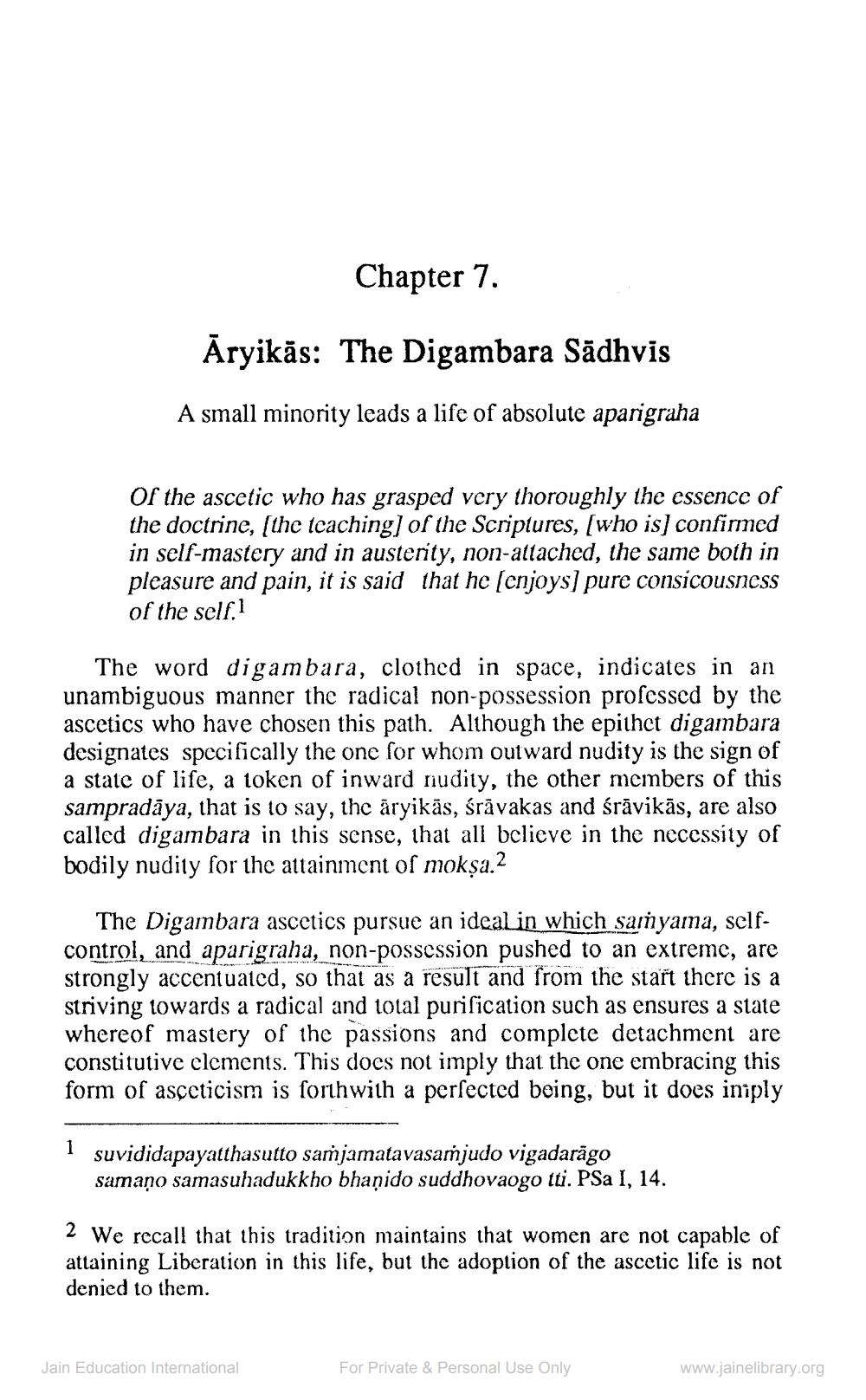________________
Chapter 7.
Aryikās: The Digambara Sādhvis
A small minority leads a life of absolute aparigraha
of the ascetic who has grasped very thoroughly the essence of the doctrine, (the teaching) of the Scriptures, (who is) confirmed in self-mastery and in austerity, non-attached, the same both in pleasure and pain, it is said that he (cnjoys) pure consicousness of the self.1
The word digambara, clothed in space, indicates in an unambiguous manner the radical non-possession professed by the ascetics who have chosen this path. Although the epithet digambara designates specifically the one for whom outward nudity is the sign of a state of life, a token of inward nudity, the other members of this sampradāya, that is to say, the āryikās, śrāvakas and śrāvikās, are also called digambara in this sense, that all bclieve in the necessity of bodily nudity for the attainment of mokşa.2
The Digambara ascetics pursue an ideal in which samyama, selfcontrol, and aparigraha, non-possession pushed to an extreme, are strongly accentuated, so that as a result and from the start there is a striving towards a radical and total purification such as ensures a state whereof mastery of the passions and complete detachment are constitutive elements. This docs not imply that the one embracing this form of asçcticism is forth with a persected being, but it does imply
1 suvididapayatthasutto samjamatavasamjudo vigadarāgo
samaņo samasuhadukkho bhanido suddhovаogo tti. PSa I, 14.
2 We recall that this tradition maintains that women are not capable of attaining Liberation in this life, but the adoption of the ascetic life is not denied to them.
Jain Education International
For Private & Personal Use Only
www.jainelibrary.org




